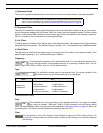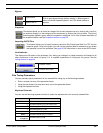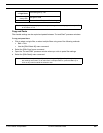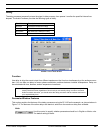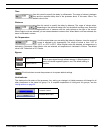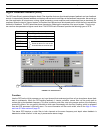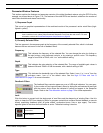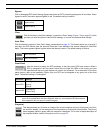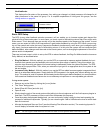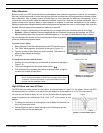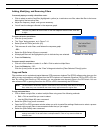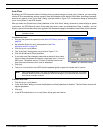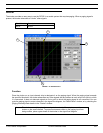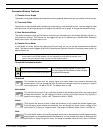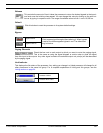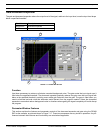
© 2003 Shure Incorporated DFR22 Software Guide 69
Digital Feedback Reducer (DFR)
Link Indicator
This displays the link status of the processor. Any setting you change in a linked processor will change for all
other processors in the same link group. For a complete explanation of linking and link groups, see the
Linking section on page 24.
Basic DFR Setup
The DFR (or any other feedback reduction processor) will not enable you to increase system gain beyond the
physical limits of the sound system. In most cases, you reach a point of diminishing returns after five or eight notch
filters are set. This is because there are usually only a few dominant peaks in the response of the system. In most
cases, you can expect a 6 dB to 9 dB improvement in gain-before-feedback by using the DFR. When you are ring-
ing out the system and notice that many frequencies feedback simultaneously, even when you increase the gain
very slowly, you have reached the point of diminishing returns. If at this point the system still has insufficient gain
before feedback, other changes must be made to the sound system, such as changing the placement of the micro-
phones and/or loudspeakers.
There are two basic ways in which to set-up the DFR to reduce feedback; the Ring-Out Method and the Insurance
Policy Method, as described below.
• Ring Out Method - With this method, you use the DFR as a preemptive measure against feedback for input
channels that operate near the feedback point and need an extra margin of stability. Using this method, you
raise the input channel's gain beyond its normal setting to deliberately make the system feed back. The DFR
will then set the proper filters. Then, when you reduce the input gain to an appropriate level, the system is sta-
ble and usable.
• Insurance Policy Method - With this method, you use the DFR as added insurance against unexpected feed-
back in an otherwise stable system. Simply place the DFR processor in the signal path, without defining any set-
tings. This method is used for systems which already have sufficient gain-before-feedback, but need protection
from occasional feedback occurrences due to non-stationary microphones or user-adjustable gain controls.
To ring out the system:
1. Remove any active filters by clicking the [CLEAR] button.
2. The “Clear” dialog opens.
3. Select [Clear All Filters] and click [OK].
4. Open all mics.
5. Slowly raise the gain of the sound system while talking into the microphones until the first frequency begins to
feed back. The DFR processor will set a notch filter to attenuate this frequency.
6. Once the system has stopped feeding back, you can continue by further raising the level and repeating the
process for additional frequencies. Typically you can raise the gain 3 dB to 9 dB above the level at which feed-
back first occurred.
7. Allocate the deployed filters as “fixed” (see the following Filter Allocation section). The remaining dynamic fil-
ters will deploy as needed when the system is in use.
Processor Linked
Processor Not Linked
Note: You can copy the fixed filters to a PEQ block to allow for more dynamic filters in the DFR window.



